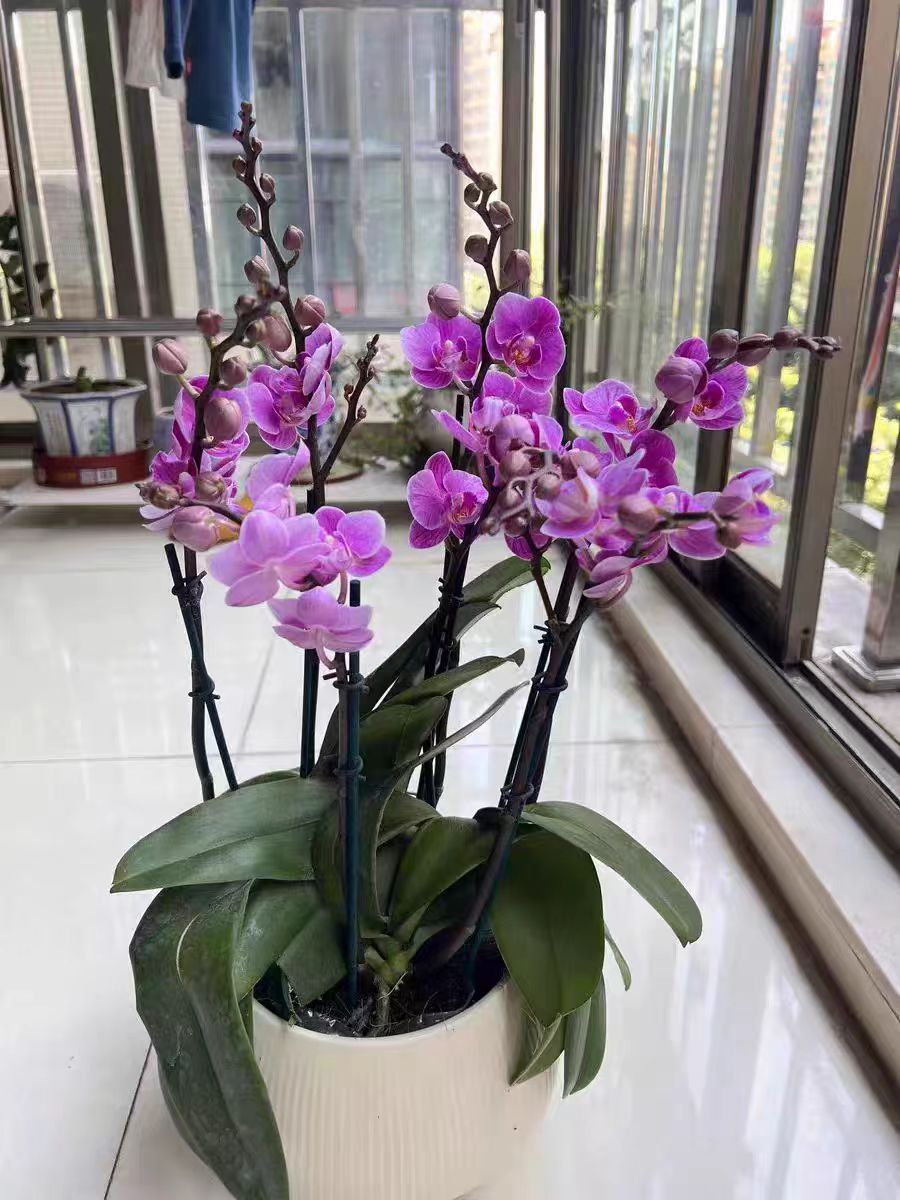In the world of flower cultivation, a common question arises when growing phalaenopsis orchids: Do they need to be staked? And when is the right time to start staking? The answer is yes, and the timing of staking is crucial.
Phalaenopsis orchids need staking due to their inherent growth characteristics. As epiphytic orchids, they naturally grow by attaching to tree trunks, rocks, and other objects in their environment. Unlike terrestrial plants, their roots do not deeply penetrate the soil for stable support.
In artificial cultivation, failing to stake them can lead to several issues. On one hand, without a stable anchor in the pot, as the plant grows taller and blooms—especially after the flower stem emerges—the overall center of gravity shifts upward, making the plant prone to leaning or even falling over. This not only affects its appearance but can also damage the plant, hindering its normal growth and blooming. On the other hand, unstaked phalaenopsis roots grow haphazardly in the substrate, which prevents close contact between the roots and the substrate, impairing the roots' ability to absorb water and nutrients.
So, when should you start staking phalaenopsis orchids? Generally, when a new flower stem grows to about 10–15 centimeters in length, it is time to stake it. At this stage, the flower stem is still in its early growth phase and is flexible, making staking less likely to cause damage. Staking too early is ineffective because the stem’s growth direction is not yet clear, while staking too late—when the stem has grown taller and become more lignified and brittle—risks breaking the stem during the process.
The common method for staking phalaenopsis involves using specialized horticultural stakes and ties. First, insert the stake into the substrate at the edge of the pot, ensuring it is deep enough to stabilize the plant without damaging the roots. Gently lean the flower stem against the stake and secure it with a tie. The tie should not be too tight; leave some room for the stem to grow thicker, as a tight tie can strangle the stem and hinder its development. Additionally, adjust the staking position according to the stem’s growth direction to ensure the flowers bloom in the desired orientation and showcase their most beautiful form.
In addition to staking the flower stem, for phalaenopsis with messy roots that struggle to attach to the substrate, it is also helpful to stake the roots appropriately. Gently arrange the roots, wrap them with moss or other substrate, and then loosely tie them to a tree trunk or other support structure to mimic their natural epiphytic growth environment, aiding root attachment and growth.
In summary, staking is essential for the growth and ornamental value of phalaenopsis orchids. By mastering the right timing and using proper staking methods, we can help these orchids bloom beautifully under our careful care.
English Do Phalaenopsis Orchids Need to Be Staked?

Share with
Tagged in :




Leave a Reply